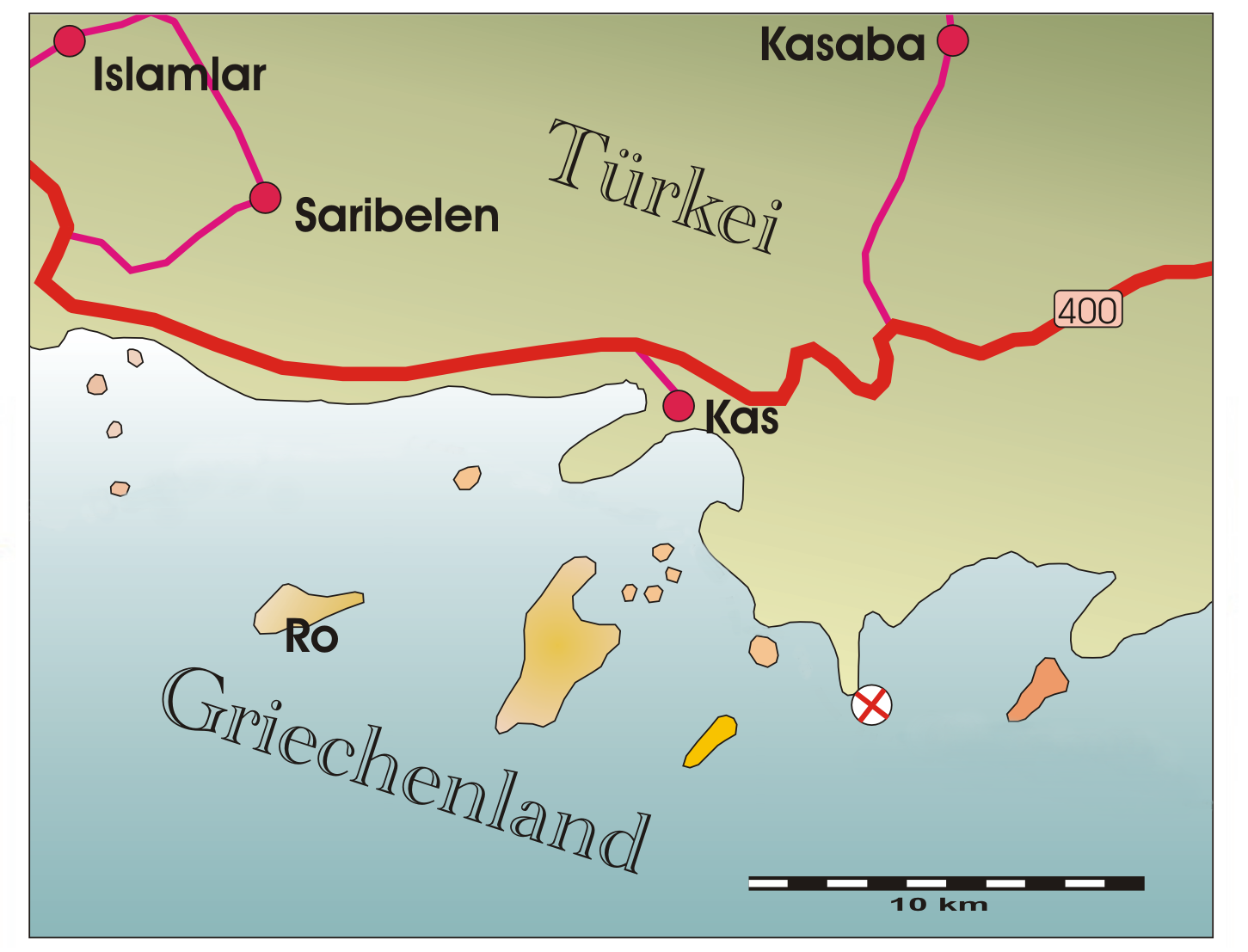Model of the Uluburun shipwreck : Wiki Commons
Accidentally discovered by a Turkish sponge diver in 1982, the remains of the 3,300-year-old Uluburun shipwreck lie 10km off the coast of southern Turkey.
An entire decade of archaeological investigation into what is the world’s oldest known shipwreck has revealed a vast cornucopia of ancient treasures, and the wreck was voted by Scientific American journal to be one of the ten greatest archaeological discoveries of the 20th century.
Following the chance discovery of the wreck in 1982, archaeological excavations were carried out between 1984 and 1994 by George F. Bass and Cemal Pulak of the Institute of Nautical Archaeology. Due to the wreck’s tricky location on a steep rocky slope 50 metres beneath the surface, excavation time for each diver had to be limited to 20 minutes per dive, twice a day. The total number of dives to take place was 22,413.

The ship was carrying over 20 tons of cargo at the time of sinking, including both raw materials and finished goods. Careful mapping of the distribution of objects allowed the excavators to distinguish between the cargo and the crew’s personal belongings. The cargo included items from at least seven different cultures, including Mycenean (Greek), Syro-Palestinian (forerunners of the Phoenicians), Cypriot, Egyptian, Kassite, Assyrian and Nubian.
The main cargo was 10 tons of Cypriot copper in the form of 350 oxhide ingots (‘oxhide’ refers to the shape of the ingots, which had four legs or handles for easy lifting and transportation on horseback). Also on board was a ton of tin ingots of unknown origin. The copper and tin were likely destined to be melded into bronze.
The earliest known intact ingots of glass were present on the ship. There were 175 of them, discoid in shape, with some coloured turquoise and others cobalt blue. There was also a ton of terebinth resin contained in about 150 Canaanite jars. The resin was possibly used for incense, or the jars could have originally contained wine with the resin added to prevent the growth of bacteria.

Among the more exotic objects aboard were ebony logs from Egypt, elephant tusks and hippopotamus teeth (to create ivory inlays), tortoiseshells (to be used as soundboxes for musical instruments such as the lute), ostrich eggshells (for use as containers) and Baltic amber beads from northern Europe.
Amidst the crew’s personal belongings was found a gold scarab bearing the royal cartouche of Nefertiti, wife of the Egyptian Pharaoh Akhenaten. It is the only known seal of Nefertiti in existence and is currently exhibited at the Bodrum Museum of Underwater Archaeology in Turkey along with other artifacts from the Uluburun shipwreck.
Other cargo included jewellery, weaponry, fishing gear, tools, pottery, zoomorphic weights and traces of food including nuts, figs, olives, grapes, pomegranates, spices and charred grains. A small hinged wooden writing board, known as a diptych, was also found, and could lay claim to be the world’s oldest book except that the wax surface, on which any writing would have been inscribed, has not survived.
The ship itself was 15 metres long and is the earliest known example of a ship constructed using the advanced mortise and tenon technique, where planks were joined by flat tongues of wood inserted into slots cut into the planks.
Dendrochronological dating of a branch of fresh-cut firewood aboard the ship suggests a date of around 1306 BCE for the sinking of the ship. This fits rather well with the presence of the seal of Nefertiti, whose husband reigned during the mid-14th century BCE.
The excavators believe the ship was sailing westward from the east Mediterranean coast when it met its doom off the shore of Uluburun. The ship’s likely trading route was to head west from the Levantine coast to Cyprus and the southern Turkish coast, then on to Crete or even Greece before travelling south to northern Africa and Egypt and returning to the Levant.
Bitterly unfortunate the fate of the ship must have been for its ancient crew, it has been a splendid stroke of luck for archaeology today to uncover such a well-preserved wealth of stunning artifacts, brimming with information about the people of the past.
Written by Robyn Antanovskii
Robyn Antanovskii is a journalist with a degree in ancient history. She keeps a number of blogs, including one on archaeology: worldarchaeologynews.blogspot.com and she is on Twitter: @robynant Robyn is also a yoga teacher and Les Mills Body Combat instructor.
HeritageDaily : Archaeology News : Archaeology Press Releases
References:
Fawcett, N. & Zietsman, J. 2012. Uluburun – the discovery and excavation of the world’s oldest known shipwreck, Akroterion (North America) 46, March 2012.
Haughton, B. 2010. The Uluburun shipwreck (Turkey), History’s Mysteries, Career Press.
Pulak, C. 1998. The Ulburun shipwreck: an overview, The International Journal of Nautical Archaeology 27.3:188-224 (1998)
Renfrew, C. & Bahn, P. 2012. Distribution: The Uluburun Wreck, Archaeology: Theories, Methods and Practice, Thames & Hudson.
Report – Ulburun, Turkey. Institute of Nautical Archaeology website, inadiscover.com/projects/all/southern_europe_mediterranean_aegean/uluburun_turkey/report/
Uluburun shipwreck’s 3300 year-old artifacts go to U.S.A., Turkish Daily News (Ankara, Turkey) – Friday, September 12, 2008




